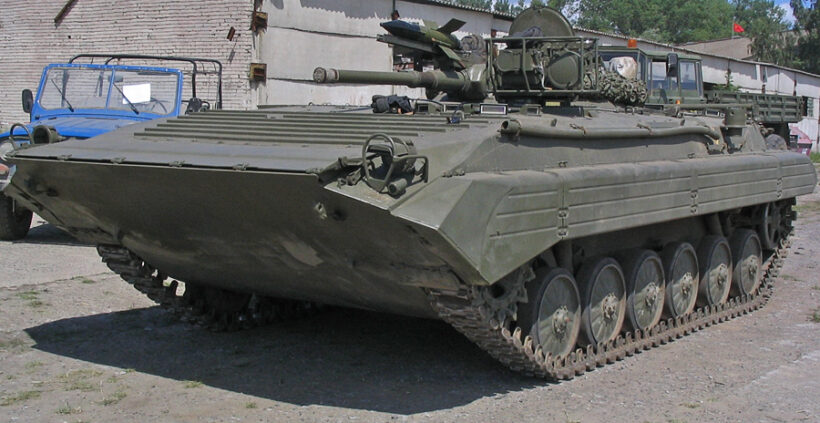The BMP-1: A milestone in infantry fighting vehicles
The BMP-1, a Soviet infantry fighting vehicle (IFV), first appeared on the world stage in 1966 and marked a turning point in the development of this weapon category.
As one of the first IFVs to be used on a large scale by a major power, the BMP-1 shaped the battlefields of numerous countries worldwide and contributed significantly to the advancement of infantry tactics. Its emergence was closely linked to the increasing mechanization of armies. The Soviet doctrine of “deep battle” required a fast and mobile force capable of breaking through enemy defenses and penetrating deep into enemy territory.
The BMP-1, with its ability to carry both infantry and firepower, provided the ideal platform for this tactical doctrine. The vehicle itself was a revolutionary design.
It had a 73mm smoothbore gun capable of firing armor-piercing, high-explosive and cumulative shells, as well as a 7.62mm machine gun for combating infantry and lightly armored targets. The combination of firepower and mobility posed a significant threat to opposing forces. The BMP-1 could accommodate a crew of three and eight infantrymen, who could enter and exit through a hatch in the rear. The infantry could fight directly from the vehicle, thanks to a built-in ramp and hatches that allowed for quick and efficient deployment. In addition to firepower and transport capacity, the BMP-1 had a number of other features that made it a versatile combat vehicle.
These included:
- Smoke grenade launcher: For camouflage and protection from enemy fire.
- Night vision system: For use in low light conditions.
- Buoyancy: The BMP-1 was able to overcome water obstacles, further expanding its operational capabilities.
- Amphibious capability: Using a special water jet propulsion system, the vehicle could swim at speeds of up to 7 km/h.
The BMP-1 has participated in numerous conflicts, including the Vietnam War, the Soviet-Afghan War and the Gulf War.
Its versatility and ability to operate in different types of terrain were praised. For example, it was successfully used by the Vietnamese in jungle warfare.
However, despite its many strengths, the BMP-1 was also criticized for its lack of armor protection and its outdated design. The thin armor provided limited protection from modern anti-tank weapons, and the vehicle was vulnerable to damage from artillery fire. The gun's low speed and lack of stabilization compromised the precision of the firepower.

Despite its weaknesses, the BMP-1 remained an important part of the Soviet and later Russian armies. It was produced in large numbers and exported to numerous countries. Its successors, such as the BMP-2 and BMP-3, built on its experiences and eliminated many of its weaknesses. The BMP-1 is a clear example of the constant evolution of military technology. It was a milestone in the development of infantry fighting vehicles and has had a lasting impact on the way wars are fought. His story provides valuable insight into the tactics and strategies of the Cold War and demonstrates the challenges and opportunities associated with the development and deployment of modern weapons systems.

1 comment